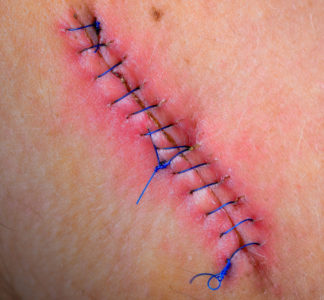 If you undergo surgery to correct an underlying issue, the surgeon will finish the the job by closing the surgical site with stitches or another wound closure technique. Before you are discharged, they will walk you through some basic wound care guidelines to prevent against an infection, but they may not explain what happens if your sutures start to come lose or the wound begins to open back up. In today’s blog, we explain what you should do if your surgical site reopens.
If you undergo surgery to correct an underlying issue, the surgeon will finish the the job by closing the surgical site with stitches or another wound closure technique. Before you are discharged, they will walk you through some basic wound care guidelines to prevent against an infection, but they may not explain what happens if your sutures start to come lose or the wound begins to open back up. In today’s blog, we explain what you should do if your surgical site reopens.
Wound Site Reopened
Caring for a wound site site that has partially or fully reopened depends on a couple of different factors. However, instead of following the generalized advice of this blog, it’s probably in your best interest to contact your surgeon or their office and explain the situation. They’ll be able to review your chart, talk to you about the specifics of the dehiscence, and explain your next steps.
For small incisions where the sutures have become loose or the wound has only partially reopened, you may be able to get by without further intervention from your surgeon’s office. The rest of the stitches may be able to hold the skin in the right position such that healing will continue to run its course and the site can eventually heal as intended. Regularly monitoring the site will be key during this time period, as will keeping the area clean.
However, if the incision has largely reopened, or worse, you can see deeper tissue because of an extended opening, you will need to have the wound professionally addressed. This incision may not be able to close as needed because the sutures are no longer holding the area in place, and there’s always the possibility that bacteria could enter the area and cause the onset of an infection.
At the end of the day, while we want you to use your best judgment about how to best care for a surgical site that has reopened, it’s probably best to connect with your doctor’s office for individualized guidance. They may tell you to apply a band-aid and keep an eye on the incision, or they may say that they’d like you to come back in and have the wound examined and cared for by the surgeon. It’s always better to be safe than sorry, so don’t just ignore your site and hope it ends up healing on its own, because bacteria or scar tissue formation from incorrect healing could end up causing problems. Be proactive, talk to your surgeon, and make sure your surgical site heals as intended.
For more information about surgical site problems, or to talk to a specialist about your foot pain, reach out to Dr. Silverman’s office today.